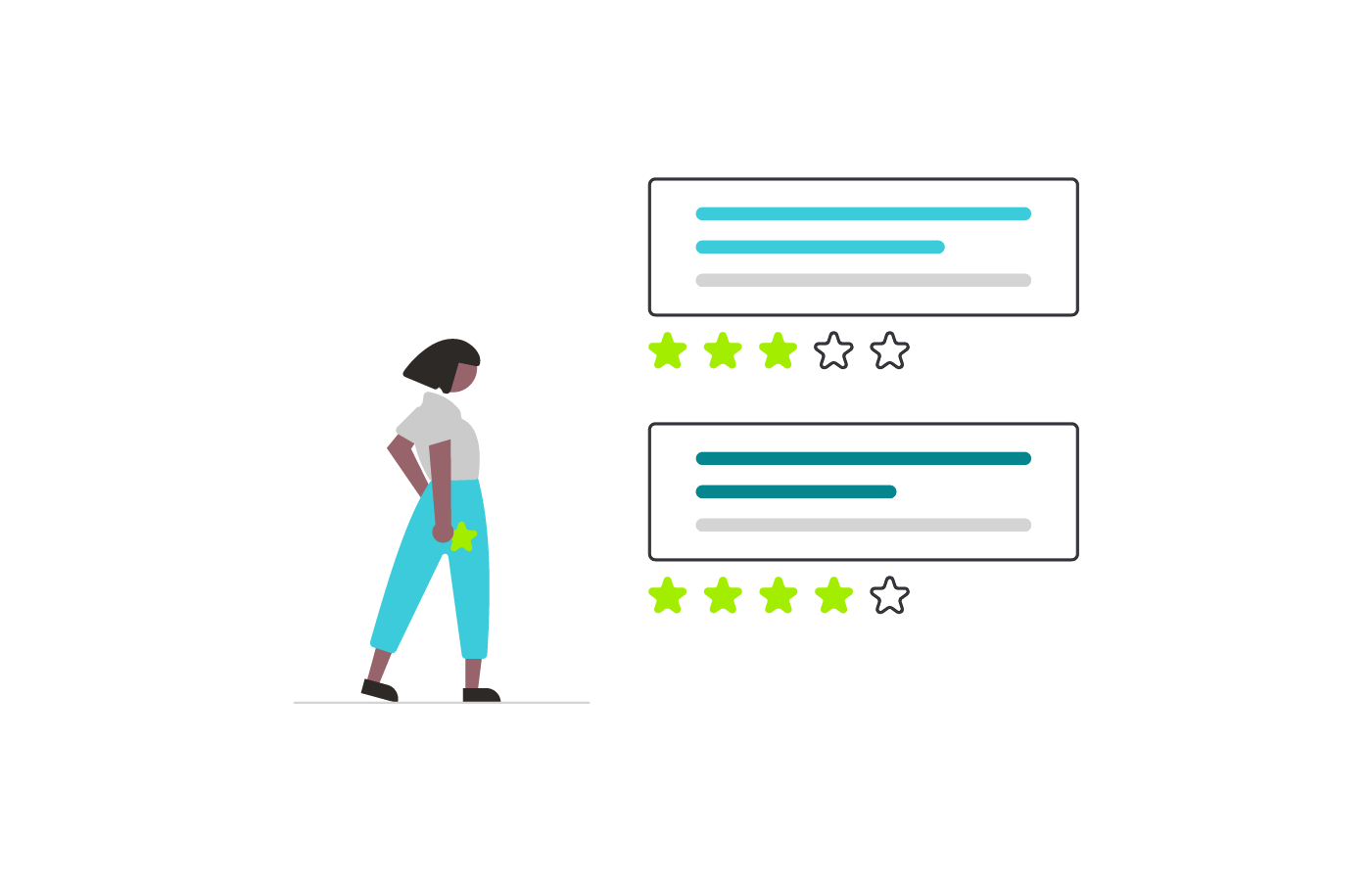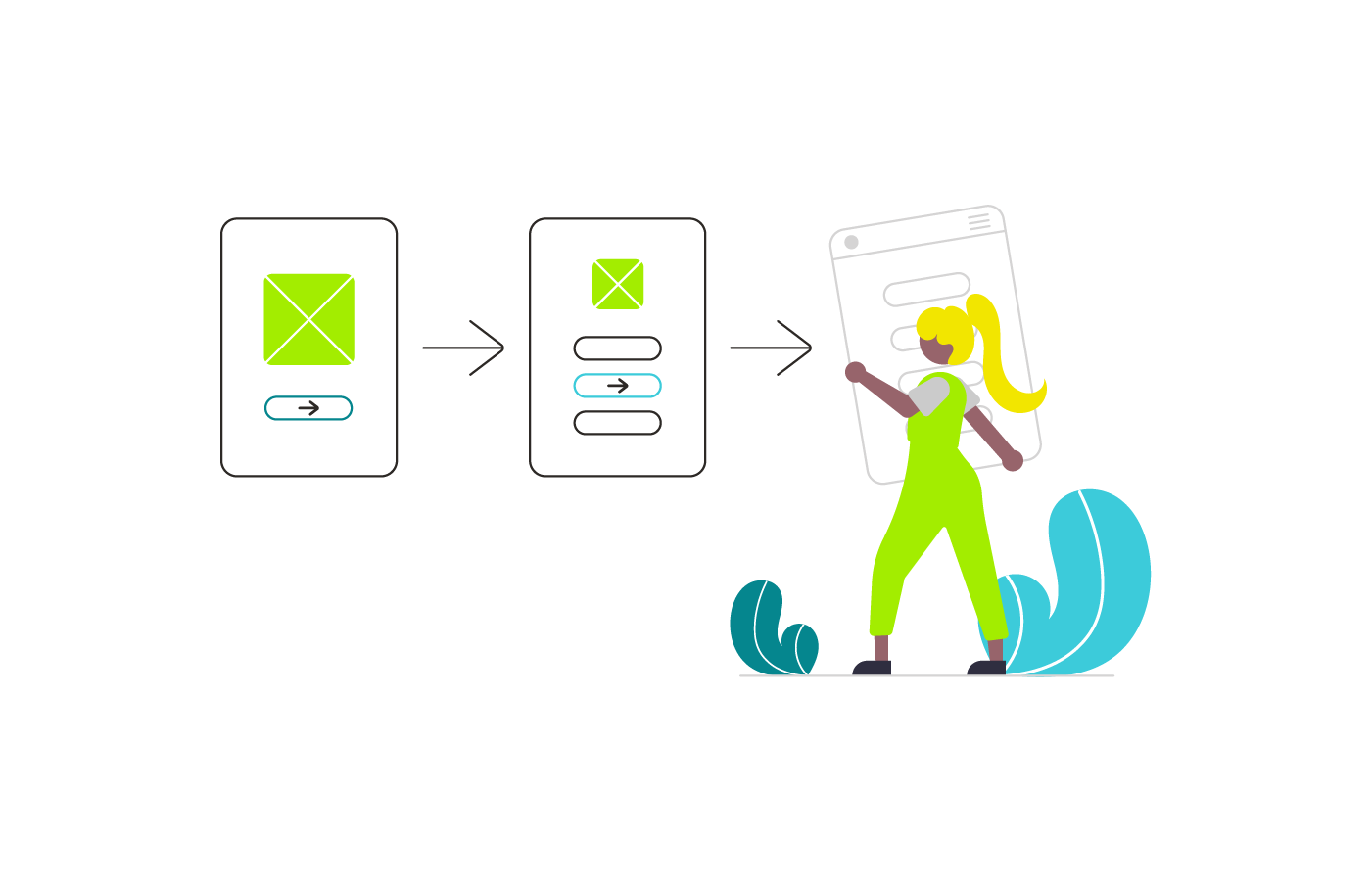Businesses can profit a lot from investing in UX & UI design services. In this article I have put together some arguments you can use to convince company executives why well-designed UX is a strategic asset and why it’s worth finding a reliable partner for UX & UI services.
Reason #1: Positive user experience increases your conversion rate
A user interface is everything a user sees on the screen, no matter if it is a simple one-page website or complex network application to control millions of connections between devices. And the first impression, both in life and when it comes to a digital product, is what very often matters most. Customers use the first look and the general appearance of your product to decide whether to buy it or not. When your potential customer has to choose among many similar products or services, user-friendliness is often a decisive factor. Positive use experience is thus aligned with your business goals, increasing conversion rate.
There are a few crucial elements you need to consider when designing user flows of your application in order to boost its user experience.
User experience - define your personas
A persona is a description of your target group, i.e. the people that will be potentially using your application. It usually contains age, gender, education, social background, professional status (i.e. CEOs of IT companies), problems they want to solve and possible motivations to use your product.
In this way, you will put yourself into the shoes of your target group and be able to design UX & UI in the way that meets their needs and expectations.

Good user experience is all about being consistent
In my experience, maintaining consistency through the design process is one of the hardest challenges, especially when there will be a few UX designers working on the project over a longer timespan. It is therefore definitely worth taking the time to create UX guidelines and style libraries that will help you maintain consistency.
A consistent design is predictable and predictability is what makes users feel comfortable when interacting with your application. It also flattens the learning curve when new functionalities are introduced.
User experience needs to be customized
Last but not least, there is customization. Today’s users, of both simple mobile apps and complex network monitoring software, want everything customized according to their preferences. When designing UX & UI, bear in mind that customization and personalization will have a great impact on the overall user experience in every digital product.
Reason #2: User-friendly UI boosts customer experience in your digital product
User-friendliness combines three factors:
Ease-of-use UI
Ease-of-use extends to navigation, actions and processes designed in a way that flattens the learning curve of your digital product. Moreover, an onboarding process should take into consideration the user's knowledge, skills and job position. If your product follows usability guidelines, user interactions are more likely to end up in a purchase.
In UI simplicity is the ultimate sophistication
Do not overcomplicate interactions. The user journey, processes and possible goals that can be achieved should be as straightforward as possible. Too many steps or interactions will confuse users and lead to a high bounce rate (i.e. the percentage of visitors who enter the site and then leave rather than continuing to view other pages within the same site), which is the exact opposite of what UX designers need to achieve. Nobody likes to fill in long questionnaires with many detailed questions. Try to create a simpler one of- a page or less, and check the number of registrations, configurations and purchases completed.
A clear CTA (Call To Action)
Usually, when you build an application, your main business goal is to increase the conversion rate and acquire as many paying customers as possible. That means CTAs should be clear as the sky is blue. Users should know exactly what will happen after clicking a CTA button.
It is a common misconception that a CTA should be short and simple or have the same copy or be similar everywhere in the application. The well-known example is “sign-in” vs “sign-up” buttons, which confuse non-native English users, increasing their irritation. Work closely with a UX writer to make sure the copy describes precisely what you want to achieve in your user interface design.

Reason #3: A carefully crafted customer journey increases their loyalty
Getting new customers is one thing, but maintaining their loyalty requires even more effort. It is highly probable that on the market there are similar applications offering pretty much the same functionalities as yours. To stay ahead of the curve, you need to make your product so appealing that customers don’t consider going to your competitors.
And this can be achieved through a carefully crafted customer journey that will encompass customers’ needs while they are interacting with your product. To do so, you need to plan your customer journey holistically: from the first interaction with your product through the phase where customers are using it actively to the last point of contact. In other words, planning a customer journey is designing how customers will be interacting with your product. UX & UI have a key role to play here.
When designing interactions, try to put yourself in your customers’ shoes. Do your best to foresee and iron out all the details that could pose an obstacle in their interactions with your product. Positive user experience is important when it comes to customer retention. If your product provides a positive user experience, your customer will be less likely to choose a different one.
Positive user experience, customer loyalty and engagement is what increases your company’s profits.
-> Read more about UX and UI design:
- How a UX prototype can improve your product
- User experience in network systems: dos and don’ts
- UX principles for complex network applications
- Why UX in network applications matters
- How to successfully provide great UX in network applications?
Reason #4: Good UX design builds engagement
An engaged user is more likely to recommend your product. This is especially true in the era of social media and the instant and public communications it has enabled. User-friendliness, intuitive navigation flow, personalization options, clear information architecture: all this builds up user engagement. And an engaged user is a more loyal user that will not be swayed to move to a competitor so easily.
On the other hand, a difficult onboarding process, non-intuitive buttons, incorrect information architecture, CTAs with texts that are difficult to understand, too much information on one screen that can not be customized—all this will definitely hurt overall user experience and deter potential clients. Nobody wants to use an app that is difficult to interact with. Customer experience is what matters here most. And good UX design is the proven path to ensuring quality, even if it isn’t always an easy one to stick to.
-> Read case study "Creating UX & UI of a portal for monitoring data visualization"
Reason #5: UX prototype can decrease development costs
When building a digital product, it is a best practice to include a phase for building a UX prototype. A clickable UX prototype is an interactive version of a product that allows you to test its functionalities and the user’s navigation flow in practice. It is a high-fidelity prototype of a product, but without a backend. If it is not a fully blown product, why build one? Why is it so important when it comes to development costs?
Well, there is solid business logic behind it. The UX prototype stage includes extensive user research, designing information architecture, wireframing, prototyping and usability tests, preferably with end-users. All this allows you to check how a given functionality works in the context of the entire product and decide whether it makes sense to send it to developers for coding.
A product idea may look good on paper, but in real-life scenarios may perform poorly. If after the release it falls short of your initial expectations, the cost of failure may be considerable, but are not avoidable.
On the other hand, a clickable mock-up of such a product prepared by the UX design team could save you time, money and a lot of frayed nerves. Usability tests conducted with end users will clearly show which functionalities work and which do not. This allows you to verify your ideas, to correct or simply discard them without running up unnecessary costs. Your developers can thus concentrate on coding the functionalities that really add value for end-users.

Reason #6: UX design is becoming indispensable everywhere
Let me finish with a more philosophical reflection. We are living in an increasingly digital-dependent world. At the same time, customer experience is a crucial factor contributing to the success of a product or service on the market. This means that UX design methodology focusing on process optimization and a user-centered approach will be applied not only to typical web or mobile applications but also in other sectors of the economy. Customers have gotten used to using user-friendly apps and will expect the same level of comfort in other life spheres. Therefore, I believe that UX design principles (user-friendliness, intuitiveness, clear information architecture) will become indispensable to every company that wants to thrive on the market, regardless of the industry it operates in.
What’s more, a picture, especially with good UX design behind it, is worth much more than a thousand words. An appealing visual design will boost your sales and you will not need to hire additional sales and marketing specialists to meet your sales quotas.
The takeaway
To sum up, a great UX design has strategic value for a company that wants to thrive on the market. It will make users happier, more active and willing to go back or recommend your product to others. From a business perspective, this will boost sales and profits alike. Therefore, investing in UX & UI design services makes perfect business sense, even for complex network applications.





